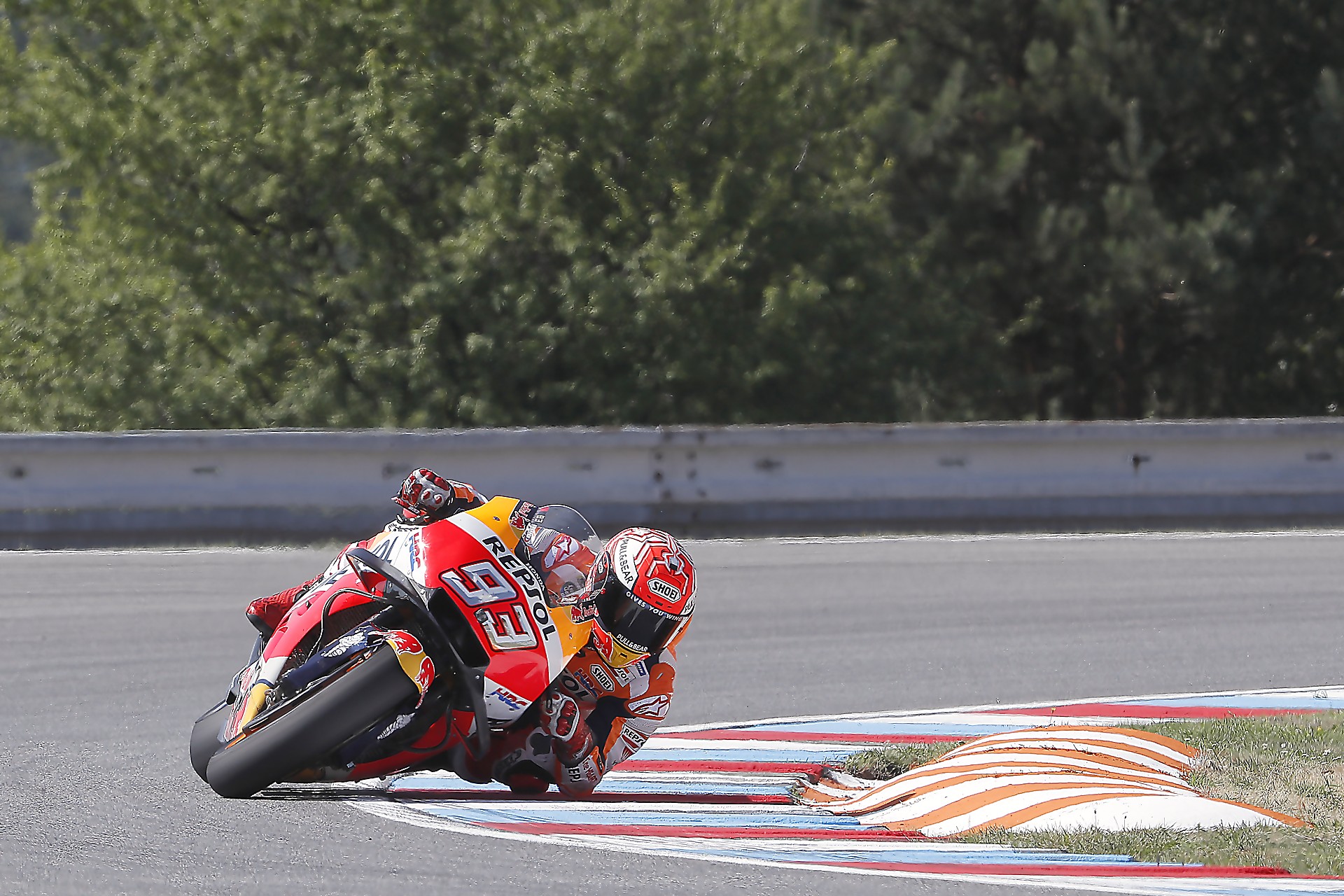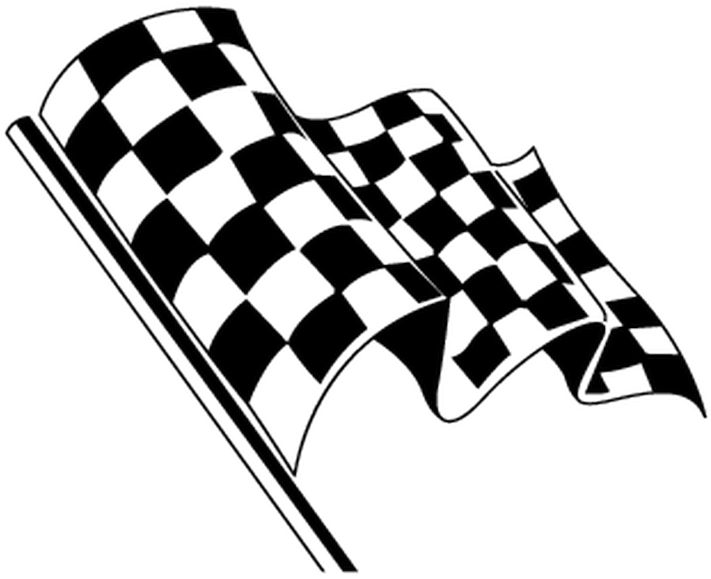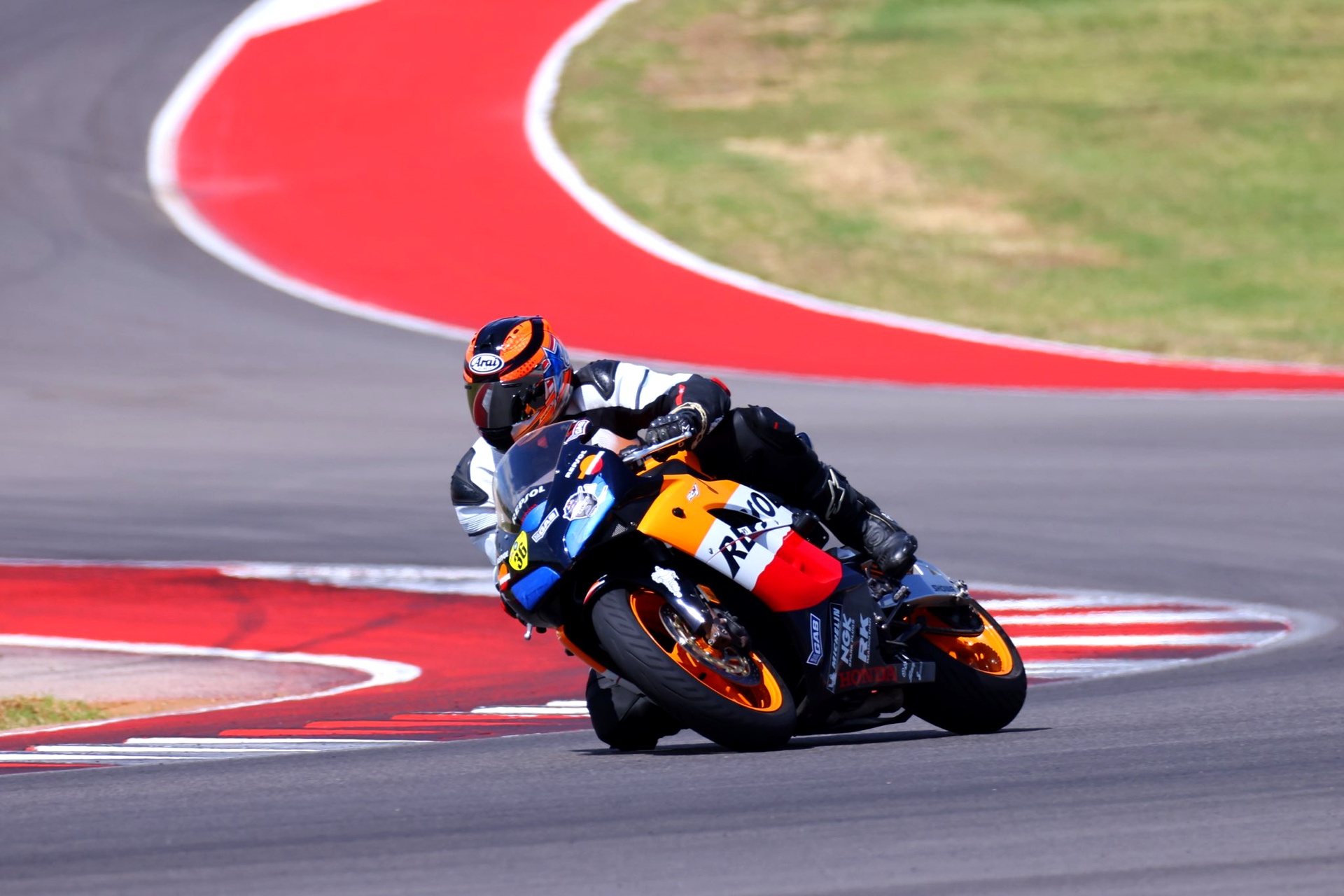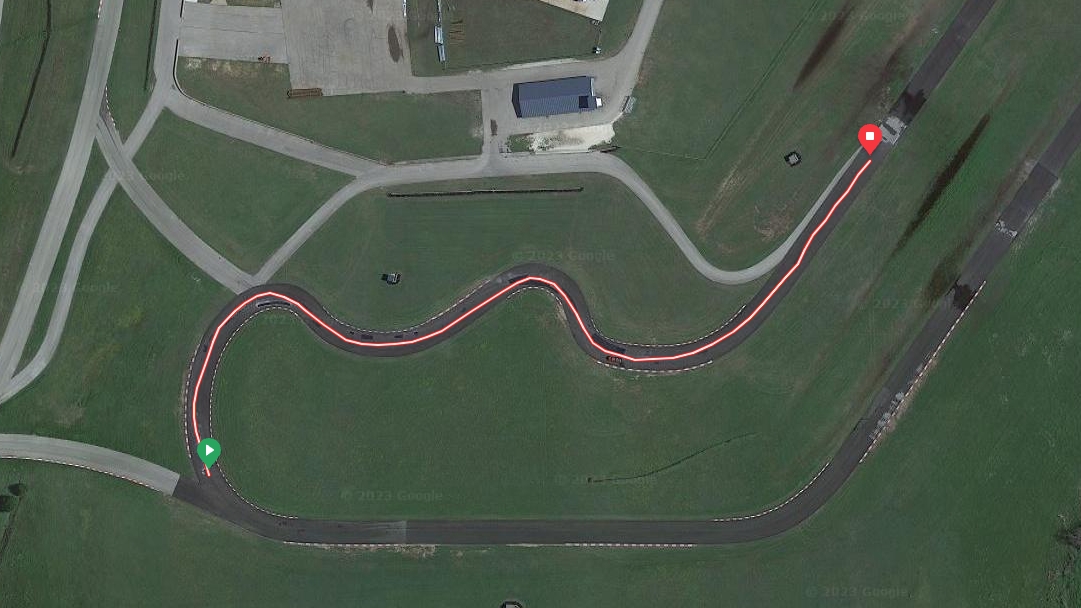FTC disclosure tour-de-force here. The following article was last updated on Dec 4, 2025 ...
Diabolic Technologic: Do Rider Aids Actually Help?
One of my riding buddies owns a 2005 Honda CBR1000RR, or Fireblade as they're called in Europe, Repsol edition. My friend was quick to correct me: this model, which he bought new in 2005, a limited edition with a unique Vehicle Identification Number, is NOT a Fireblade. It's a CBR1000RR Repsol, an increasingly rare machine that incorporates zero rider aids.
“Rider aids turn tricky roads into calm miles. Riders can lean, brake and get back on the gas sooner while the bike keeps things stable.”
The engine is an in-line four-cylinder motor and Honda advertised it as having 172 horsepower with a top speed of 178 miles per hour. Whatever the correct name, it's a great-looking motorcycle in Repsol livery. Those orange wheels really stand out in a crowd.
That motorcycle is fast. Capable of quarter-mile times in the low to mid-ten-second range, he easily accelerates away from me during track days. Through modifications, which include tuning and an exhaust system, my friend's Honda will attain top speeds of around 180 miles per hour, indicated on his GPS-verified speedometer.
Again, this machine does all of that without rider aids.
With Rider Aids, The Best Gets Better
Rider aids for motorcycles started showing up in the late 1980s. ABS was first available on the BMW K100 in 1988 and then the 1990 Honda Pan European. Traction control for production motorcycles was first available with the BMW K1 in 1988.

Honda offered traction control as an option, along with ABS, on their ST1100 beginning about 1992. Technological progress has improved rider aids to where they're now nothing short of amazing. The inertial measurement unit, or IMU, that will be delivered on certain models of Kawasaki, monitors six axes of motion: front-to-rear, yaw and lean angle.
It samples inputs five hundred times per second, altering engine performance, braking and other parameters as needed. As an example, it automatically stiffens suspension dampening as speed increases, and adjusts braking pressure based on lean angle. Depending on your riding abilities (depressing or heroic), it will display the maximum lean angle attained.
Adventure bikes have their own versions of rider aids. One friend, an off-road nutcase, says his bike will give a little power boost to lighten the front wheel when encountering an obstacle like a root when riding a trail. The latest racing iterations of rider aids allow modern MotoGP riders to routinely achieve lean angles greater than 60 degrees without falling.
You'd think this makes modern motorcycles safer and, in the case of performance-oriented motorcycles, that they would outperform motorcycles like my friend's Repsol Honda, which is nearly old enough for an antique license plate. But has there been an improvement?
Rider Aids Or Not, How Much Have Motorcycles Changed?
In the case of sportbikes, they've changed less than you'd imagine over the last couple of decades. For instance, manufacturers have standardized rim diameters on the Honda Fireblades (which started out as a CBR900RR) since 1996, with only minor width changes. Weight for the Fireblade has also varied less than expected. The first Fireblade identified as a thousand, the 1996 CBR929RR, weighed 454 lbs wet, a weight nearly identical to the 2022 CBR1000RR-R, which weighs 455 lbs wet. Rake and trail along with wheelbase for my friend's Repsol and the new Fireblade are similar ...
2005 rake and trail: 23.8 deg and 102 mm
2022 rake and trail: 24 deg and 102 mm
2005 wheelbase: 55.6"
2022 wheelbase: 57.4" (probably to help control wheelies but seat height for both bikes is within 0.2" of each other)
Touring motorcycles have had big changes but mostly in load-capacity and engine power. Riders considered the first generation of Gold Wing, capable of speeds up to 140 mph, a performance motorcycle but Honda designed it as a new idea in two-up, long-distance riding.
Weight and wheelbase grew as the years passed. 60.9" was the wheelbase for 1975, 66.7" for the latest model; 584 lbs for 1975 and 844 lbs for the current base model; but like sportbikes, rim diameter has not varied greatly. The 1982 GL1100 model switched to an 18" front wheel and 16" rear and with the exception of the GL1200 model, manufacturers have continued this setup until today.
So, What's Changed?
Horsepower for one. Modern fuel injection programming and engine design have radically increased power and efficiency output on both motorcycles and automobiles. The claimed horsepower for the 2022 CBR1000RR-R SP is a neck-snapping 215 and currently there are a half-dozen models from different manufacturers in the 200 hp range.
Top speeds reflect this. The 2005 Fireblade claimed a top speed of 178 mph and the 2022 Fireblade hits an electronic limit at 186 mph but can go higher. Quarter-mile acceleration times reported in testing for the 2022 are in the same ballpark as the 2005 but trap speeds are faster.
Tire technology advancements have dramatically raised the bar for both handling and max load. Another big change is the aforementioned rider aids. Can modern riders take advantage of the new technology and are they safer as a result?
Digging Into The Archives
The big question is: how do we gauge improvement? In my home state of Texas, motorcycle statistics reveal little. Consistent problems that have little to do with rider skill-alcohol consumption and helmetless riding, to name a couple-exacerbate the issues. All of the public service announcements, billboard projects, motorcycle safety training changes and other great-sounding plans have had about the same outcome in reducing deaths - virtually zero. Consistently, about 40 percent of motorcycle fatalities are alcohol-related.
As for skill, poor riding skills also contribute to the annual fatality rate, another issue that current rider aids may not help.
I considered racing lap times. Things have sped up over the last couple of decades but rider aids have confused the issue. If entry speeds are low enough not to exceed available traction, modern technology allows the rider to fully open the throttle and depend on the electronics to keep speeds within limits, preventing a crash.
The track at the Motorsports Ranch Cresson has a series of three first- or second-gear turns called "the Rattlesnake." I spoke with an expert BMW S1000RR racer about them. He reports that on entry, he'll fully open the throttle and depend on electronics to get him through.
My next thought was that maybe lap times could be useful in determining progress. I found an excellent article by John Burns where he analyzed lap times from a couple of different tracks over a nearly twenty-year period. At Donington Park and Phillip Island, lap times dropped around 15% over the years but he found it impossible to draw any solid conclusions.
I contacted the Central Motorcycle Roadracing Association, talked with nice folks but was unable to get any historical data to compare.
The Skinny On Rider Aids
At first, I resisted ABS. Sanctimonious me: "People just need to learn to use their brakes properly!" I've mellowed a bit as I've aged and now see the value. Riders do need to learn to use their brakes but hard braking over an unseen slick paint stripe or manhole cover in darkness might not be feasible without ABS. And traction control could prevent a crash while accelerating over an oil slick on a wet intersection corner.
The future gets even more astonishing with the release of a brand-new rider aid from Kawasaki, only available on the newest Ninja H2 SX:
"Advanced Electronics: The new Bosch radar-based Advanced Rider Assistance Systems (ARAS) features surround sensing technology that adds to rider reassurance while touring or riding in heavy traffic. Helping to make riding safer and more convenient, the ARAS system includes: Adaptive Cruise Control (ACC), Forward Collision Warning (FCW) and Blind-Spot Detection (BSD)."
The introduction of ABS, traction control, IMU and other rider aids points to motorcycles being safer and more capable than ever before. Kawasaki's new technology above is a prime example of how rider aids might help us endure the unavoidably unexpected. To monitor and adjust our motorcycle's performance in real-time, for example makes it clear that rider aids can improve things and will likely continue to do so in the future.

What's Your Take On Motorcycle Rider Aids?
Are these new electronics just more stuff that'll break and aren't worth the potential repair cost? Should riders just get better training and practice their skills? Or are they life savers and, after all, we're just human and make mistakes? Your input is invited. Leave a comment and/or write an article!





Comments
Kelly,
Good to see you’re still around, it’s been a minute. As per my antiquated ideas I’ve had to make a lot of concessions to the, I think, much needed and helpful rider aids. Just to mention, ABS on my heavy Indian has made me feel a little more confident and comfortable a few times.
Mike
The comment by the S1000rr racer is the emerging concern with rider aids breeding rider complacency. As traction control was being introduced into sport bikes I knew a lot of competent riders that admitted they got lazy with their set up process and over rode the throttle in street situations they normally would not because they new the motorcycle would compensate for it. The rider aids are great tools, but all tools have to be used with proper understanding of how to use them. There are still a lot of motorcycles on the market without these aids so riders need the the proper training and mindset. Complacency kills. I know the goal is to be able to save the rider from our own complacency, stupidly, and lack of skills but at what point does that start to interfere with the rider’s controls and venture back into dangerous? The steering assist on my car sometimes is a more aggressive correction than what I would make.
(And its super annoying not being able to do a quality stoppie with bikes that cannot turn off the abs 😎)
My recent wake up call was riding the Pan America with its six axis IMU (and all associated aids) for the summer (including two track days) and then getting back onto a Heritage with only ABS. Oy.
I crashed a 21 MT09 at the the track with rider aides. Coming out of a really fast left hand sweeper the rear spun up. Yup that's right the TC didn't like how long it was spinning so it step in and stopped it. I was fine with the rear spinning and was just holding steady throttle to and letting the bike catch up. When the TC stepped in and stopped the rear from spinning the bike did a mini high side then went into the most violent tank slapper which didn't end well. Still waiting on some parts from Yamaha. Without the TC I wouldn't have crashed so not all rider aides are great. Most of the time they work very well. All the riders aides were set at minimum.
Thoughts gone wild? Write an article!